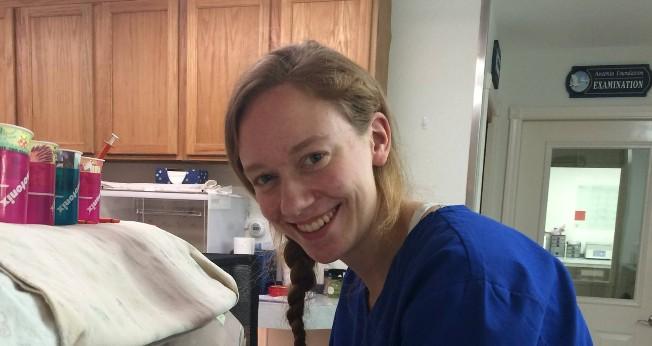April - October 2015
A comparison of individual behavioral responses on mice and shrews based on population density
The focus of my research is to determine the effects of population density on individual behavior. In order to test this, white-footed mice (Peromyscus leucopus) and northern short-tailed shrews (Blarina brevicauda) from two areas of varying population densities were trapped at Rice Creek Field Station and their boldness when faced with a predator scent, red fox urine, was tested in the field. The hypothesis states that individuals from high-density populations will exhibit bolder behaviors due to increased competition for resources in comparison to the lower density populations. Personality in animals is defined as consistent differences among individuals that are retained across environmental changes. Due to this, the mice and shrews were expected to exhibit different responses when faced with the predator scent as a result of their differing personalities. It is also hypothesized that the boldness trait is fixed within populations, meaning that the average reaction from the individuals will demonstrate higher levels of boldness in the areas of a more dense population. This research is important because while more bold individuals take more risks, they are able to accumulate more assets, such as food and mates. On the other hand, less bold individuals take fewer risks and therefore are able to protect their assets and ensure survival. Both of these personality traits are important for increasing behavioral variation and in turn are important for population persistence. Personalities in animals are therefore crucial to understand when considering population evolvability and conservation.
I have learned a lot about conducting research throughout this project, mainly that it takes much more time and patience than one would initially expect. The original proposal needed a lot of revising and even once that had been completed, complications during the process required us to revise even the original hypothesis. The entire process was much more involved than I had expected, but I learned a lot about the field work that I was doing and the basics on how to plan and set up a study such as this. I was happy to get a lot of hands on experience with this fieldwork and to have the chance to handle the wild animals and to see firsthand their reactions to the testing we carried out, which is often much harder to observe in the wild.
A memorable moment in my research was when we caught the first mouse at Rice Creek. This was the first time that I had handled a wild mouse for this research, and it was interesting to be able to take the measurements and watch how his behavior became more cautious after the fox urine had been placed in the tank with him.
I grew up in Amston, Connecticut. I have always loved animals and I grew up with pets- cats, dogs, and albino mice. I love being outside in nature, from just playing outside as a kid to camping and lots of hiking. When I was younger, I always wanted to know why and how everything in nature happened, and because of this I have always been interested in science. In high school, I became involved in environmental sciences and conservation, and by my freshman year of college it had become my ambition to work in wildlife rehabilitation.
After I graduate in May of 2016, I plan to work in wildlife rehabilitation. Over the past summer, I did just that, working as a caregiver for orphaned and injured songbirds. I hope that after graduating, I can find a similar position that I feel just as passionate about.



